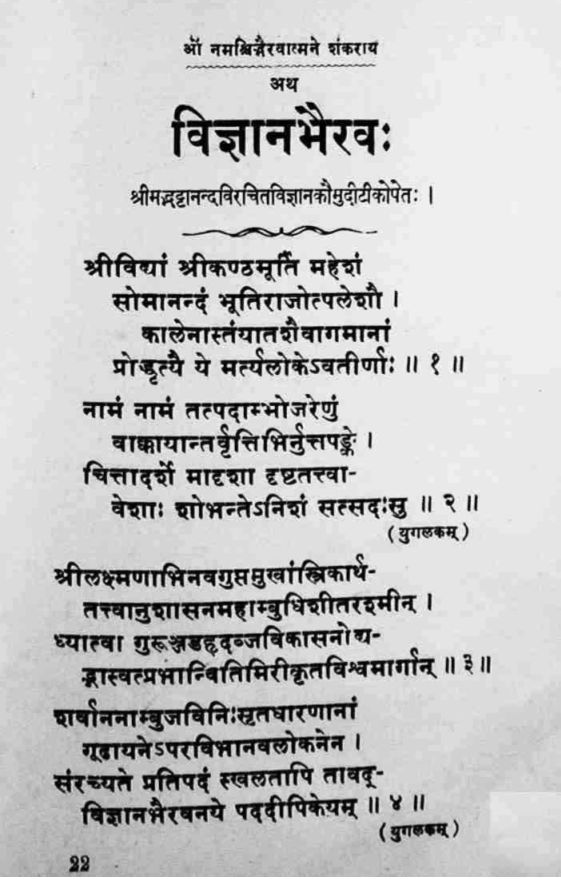

A Note About Kashmiri
by S.S. Toshkhani
Kashmiri is a unique language in the Indian linguistic context. It is analytic like the modern Indian languages of Sanskritic stock and synthetic like the Old Indo-Aryan itself, possessing characteristics of both and at the same time having peculiarities of its own many of which are yet to be fully explored. Linguistically, its importance can hardly be overlooked because, as Siddheshwar Verma has observed, it reveals linguistic strata of various ages-"Vedic, Buddhist Sanskrit, Pali, Kharoshthi Prakrit"1. George Buhler's view that it is of the greatest importance in the study of a comparative grammar of Indo-Aryan languages2 only stresses the obvious for preserving old word-forms and also revealing how new forms took shape from old bases, Kashmiri does seem to hold the key to understanding the processes through which these languages have passed in their development before assuming their present forms.Grierson too appears to endorse the same point when he says that a study of the Kashmiri language is "an essential preliminary to any inquiry" regarding the "mutual relations of the modern Aryan vernaculars of India".
Vedic Origin of Kashmiri
There exists a very strong evidence to support the claim that Kashmiri has descended from the Vedic speech or, as pointed out by Buhler, from "one of the dialects of which the classifical Sanskrit was formed"4. References are replete in Rig Vedic hymns to rivers and mountains which have been identified by scholars like Zimmer with definite places in Kashmir, indicating that the region was a part of the Vedic Aryan world - at least in the geographical sense. Linguistically too this fact is strongly corroborated by the presence of a large number of lexical and phonetic elements in Kashmiri that can be directly traced to Vedic sources. These include several words most commonly used in everyday speech in Kashmiri. For example, we have the Kashmiri word yodvay meaning if, what if, yet, still, nonetheless. This appears in almost the same form in the Vedic word yaduvay 5, the corresponding word for it in Sanskrit and Hindi being yadi. Similarly, the word basti, which in Kashmiri means skin, hide, bellows, is hardly different from the Vedic basti meaning goat or bastajin meaning goatskin. The Vedic word sin occurs as syun in Kashmiri meaning "a cooked vegetable", while the Vedic san appears in Kashmiri as son meaning deep. Again, the word vay which means grains in Vedic is used in Kashmiri in the same sense. From the Vedic root taksh comes the Kashmiri word tachch (to scratch, to peel, to plane, to scrape) and its derivative chchan (carpenter, Skt Ksh invariably changing to chch in Kashmiri). Several Kashmiri words have evolved from Vedic through intermediary Pali or Prakrit forms. For instance, Ksh. atsun (to enter), Pali accheti, Vedic atyeti. Similarly Vedic prastar, from which the Hindi word patthar (stone) is derived, changes through the intermediary Prakrit form pattharo to pathar or pathur in Kashmiri retaining the original sense of "on the ground" or "floor". These are but a few of the numerous examples that show how Kashmiri has preserved phonetic, semantic and even morphological elements of the Vedic speech. It is perhaps on the basis of such overwhelming evidence that eminent inguists like Jules Bloch, Turner, Morgenstierne, Emeneau, Siddheshwar Verma and several other scholars have pointed to the Vedic origin of Kashmiri, arriving at their conclusions after intensive research on the actual traits of the language. Phonetic aspects of how Kashmiri retains some of the most archaic word forms that can be traced only to the Old Indo-Aryan speech have been analysed at some length by Siddheshwar Verma. Citing word after word, Verma provides evidence on how Kashmiri shows contact with older layers of Indo-Aryan vocabulary 6. The Kashmiri word Kral (potter) derived from the Vedic Sanskrit Kulal is one of such words which he has examined in detail, taking help of Turner's Nepali dictionary. While all other modern Indo- Aryan languages, except Nepali and Sinhalese, have for it words derived from the Sanskrit kumbhakar, Kashmiri alone preserves remnants of the relatively older kulal, he points out, which appears for the first time in the Vajasneyi Samhita of the Vedas. Kumbhakar makes its appearance after the Vedic age (c.f.Monier Williams: Sanskrit-English Dictionary) and it is from this that words like Hindi Kumhar, Gujrati-Marathi kunwar and Western Pahari kumar have originated.